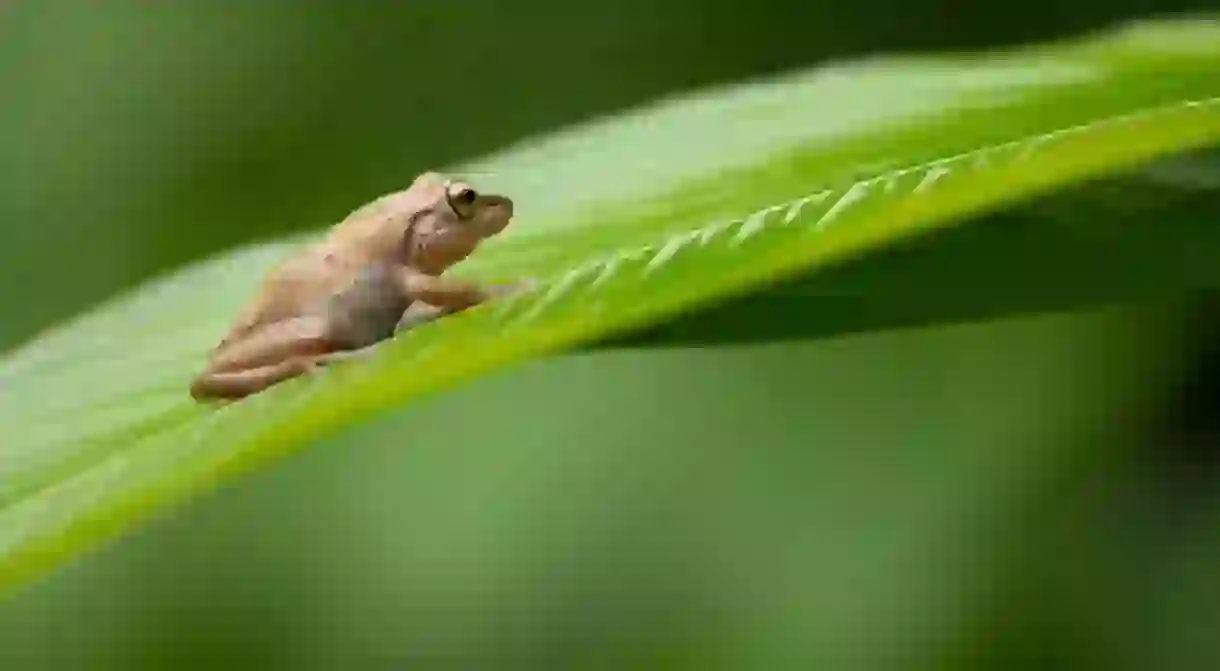Here's Why The Coquí Frog is the Symbol of Puerto Rico

As the sun sets in Puerto Rico, the volume rises as the tiny coquí begins its evening chorale, and locals and visitors are serenaded into sweet slumber by the little male frogs’ call of “Co-kee! Co-kee!” The island was once filled with millions of these frogs from a number of different species, but today only 17 species remain, and a few of them are endangered or threatened as a result of deforestation. But just like the Puerto Rican people, they are resilient and their voices are loud, and they will be heard. This is why the coquí is the perfect national symbol for Puerto Rico: small island, small frog, BIG VOICE.
The frog of legend
The coquí was here long before any humans came to the island, so they have the longest history, and perhaps they sing each night because they have so much to say. The little frog greeted the Taíno when they came to Boriken from South America. Taíno petroglyphs depict the frogs, and many of their stories revolve around the amphibian.
The legend is that there was a beautiful goddess who fell in love with Coquí, the chief’s son. When he went out to fish, she would make sure that he came back with a big catch, and he would sing praises to her. One evening, she came to him in the form of a Taíno maiden, and they fell in love. She told Coquí that she would come back the next evening at moonrise, but the next evening came, and with it came the evil Juracán. The sky blackened and his winds howled and the goddess tried to protect her lover, but Juracán snatched him away and she never saw him again. She did not know how she could go on without her beautiful Coquí, so she created this tiny frog that will forever call for him: “Co-kee! Co-kee!”
Fact or fiction?
In El Yunque National Rainforest, people claim that it rains coquís. This is somewhat true, but not technically accurate. The frogs are actually jumping out of the tree for reasons of survival. At certain times of the year, when the humidity is high, coquís climb up the tall trees of the forest. As with many journeys, there are perils, and for the coquí the main danger is the tarantulas who lie in wait to eat them. They are smart little creatures, so to avoid the spiders, they jump from the trees instead of climbing back down, because they are so light that they just float to the ground. So if you are under a tree when they decide to descend, you could get caught in a coquí shower.
The sound of Puerto Rico
The coquí frogs are found on a number of islands throughout the Caribbean, but only the ones in Puerto Rico sing, and only the males in Puerto Rico are vocal. The male coquí’s song has been measured at 90 to 100 decibels, making it the loudest existing amphibian. Like the coquí, many Puerto Ricans are smaller in stature, but exuberant when speaking. The saying is, “I’m not yelling, I’m Puerto Rican.” The traits of this miniscule frog and the tremendous people of the island often mirror each other, so it is very fitting that the coquí is Puerto Rico’s national symbol.
Take a look at these amazing tours and excursions in Puerto Rico.













